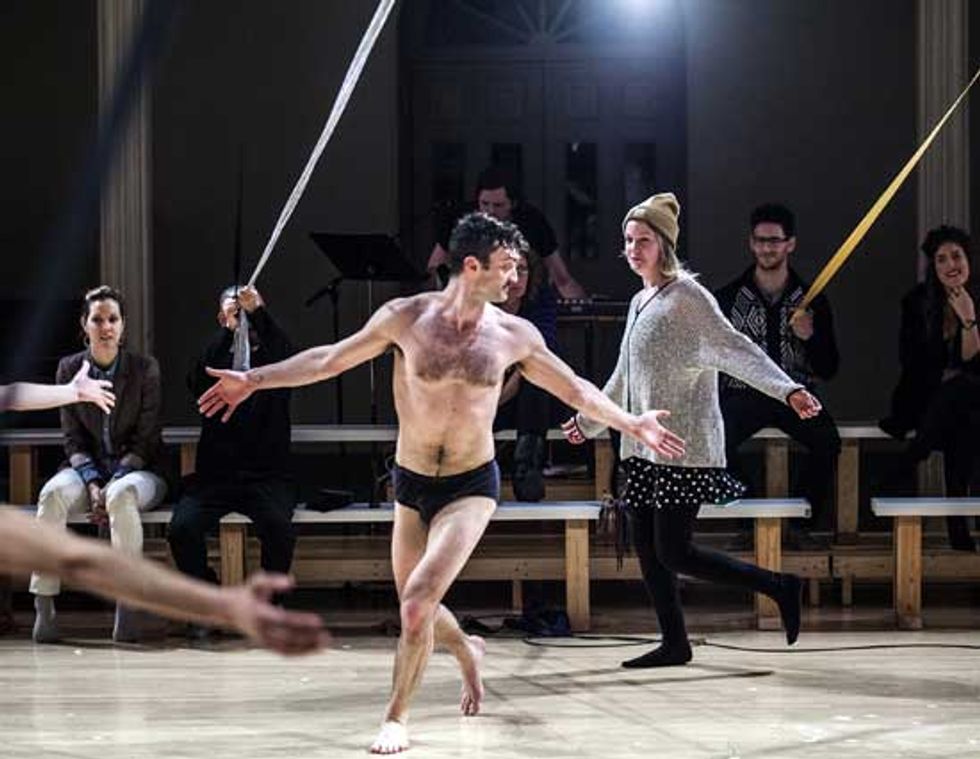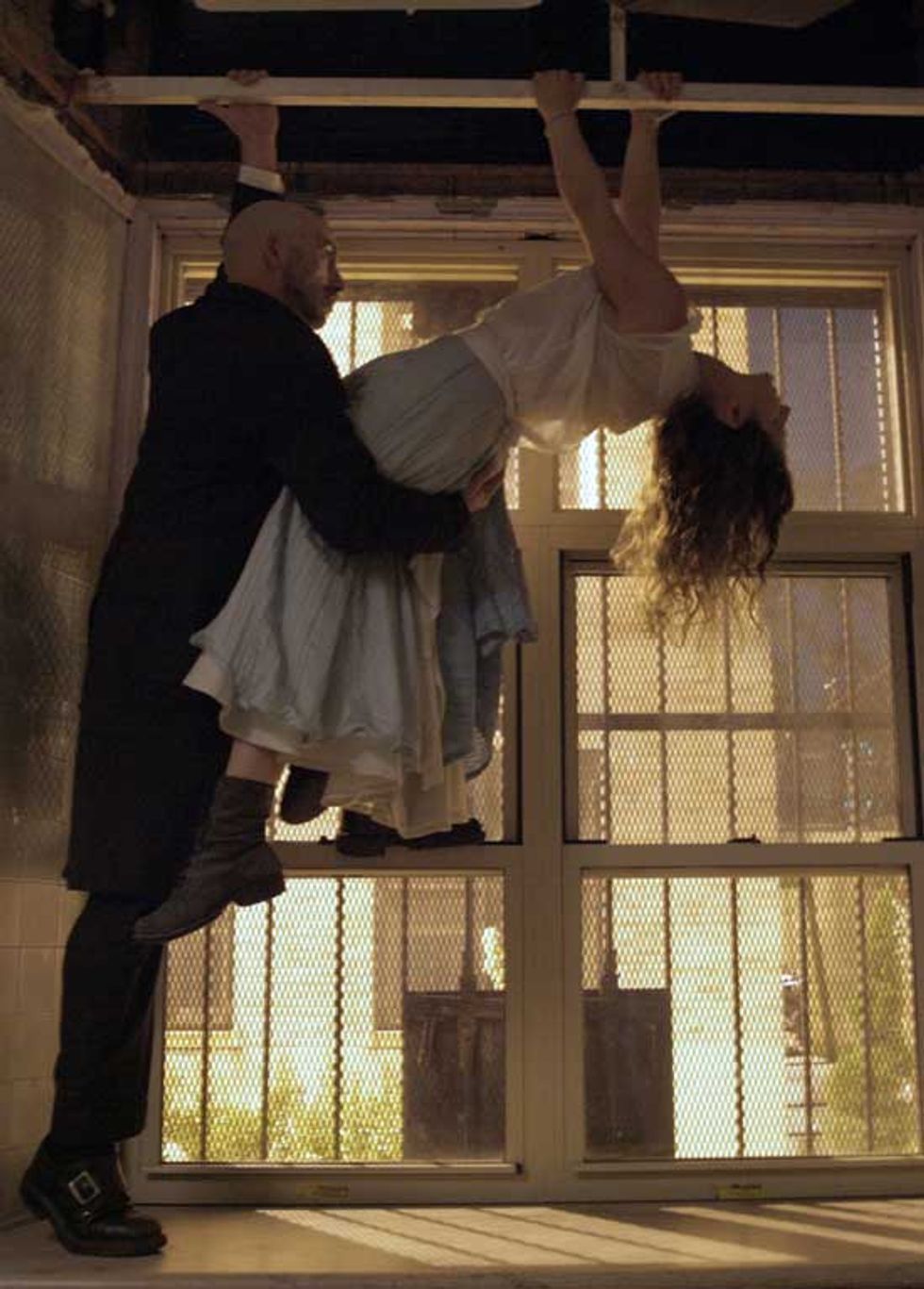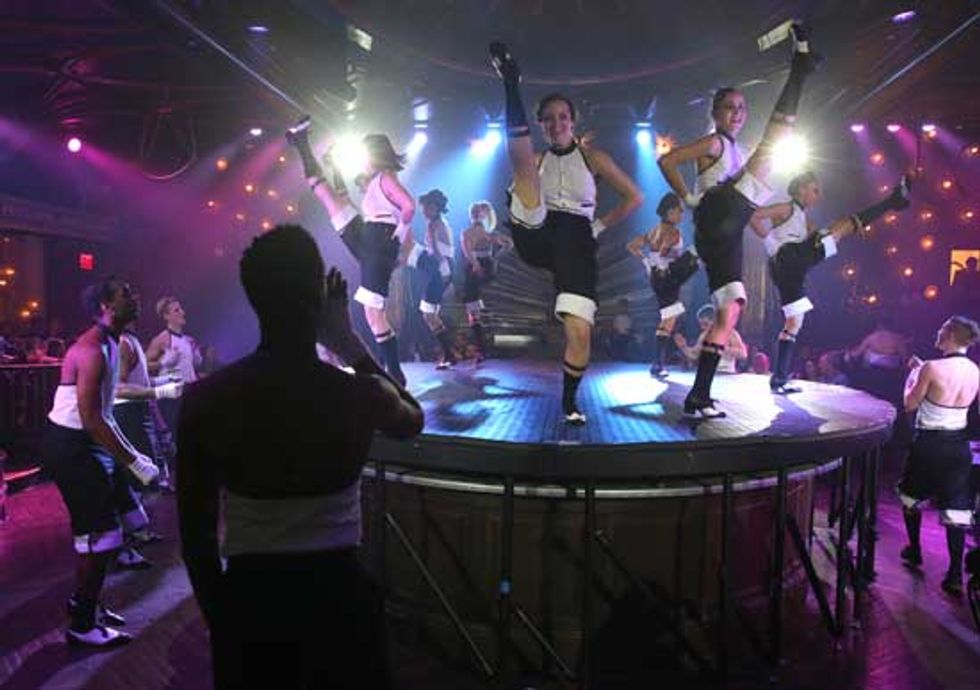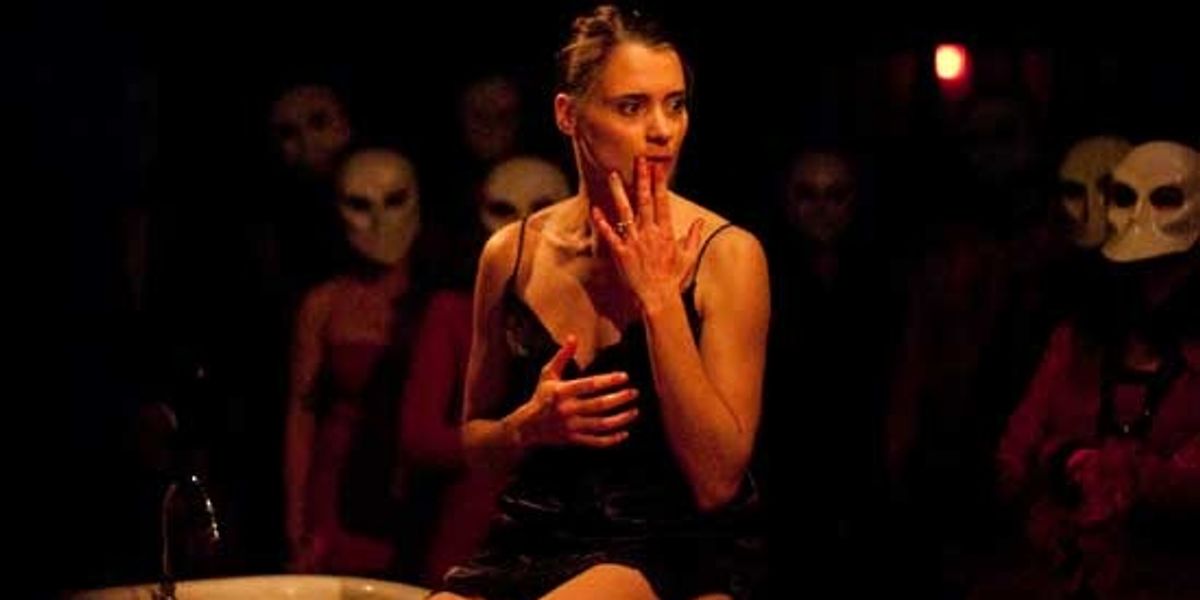Immersive, Integrated & Awkward
Some nights, Jennine Willett convinces two strangers to get into bed with her. Then she reads them a bedtime story for almost exactly six minutes. It’s just one of many intimate but carefully calibrated moments Willett engineers between herself and her audience in Third Rail Projects’ production of Then She Fell, an immersive theatrical dance production based on the writings of Lewis Carroll.

Dancers don’t typically enter the professional field prepared to coax viewers into joining them on a bed, or to hold hands, or skip together side by side. But an increasing number of productions—from high-profile extravaganzas like Punchdrunk’s Sleep No More (which has taken over entire buildings in London, New York City and Boston), to avant-garde installations by postmodern choreographers like Jody Oberfelder and Siobhan Davies—require dancers to do just that. Although not your typical choreography, participatory encounters must be as deftly timed as a pirouette—and as rigorously rehearsed. But how do perfomers learn to navigate a show in which every moment may contain a surprise?
Above: Sean Donovan encourages audience members to skip with him around the stage in Faye Driscoll’s
Thank You For Coming. Photo by Maria Baranova, Courtesy Faye Driscoll.
It starts with studying the audience members. For his role in the Dionysian dance-fest Queen of the Night, dance captain Kimo Kepano concentrates on body language as he scans the crowd for someone to pull onto the dance floor. “I’m looking for someone who allows themselves to be open,” he says. “Someone who in their eyes has already said ‘Yes,’ and who has planted their feet firmly on the ground and is already smiling.” After locking eyes with his target, Kepano swoops in and asks a simple question. His directness draws viewers in. “I’ll go up to someone and ask, ‘Are you willing to say yes to me?’ ” If they answer, Kepano considers it an in. Soon he’ll be able to introduce them to higher levels of engagement built into the show, like getting fed out of his hand, or being pulled in for an intimate slow dance. “We come at it from a place of deep, tactile feeling,” he says. “It’s like meditating with someone.” The process forces Kepano to dance more organically to allow his body to pick up on “physical vibrations” from the audience. “Feel the space around you, the air vibrations, the architecture.”
Both Brandon Washington and Nikki Zialcita say eye contact helped them navigate Faye Driscoll’s recent work, Thank You For Coming: Attendance. Establishing a firm but flexible gaze at the beginning of the piece prepared viewers for an eventual touch. “If you look at someone first and then touch them, it’s very different than when you just touch them without first checking in,” says Zialcita. “The eyes are really important to letting people know you’re not trying to put them on the spot. You can’t glare,” says Washington. In rehearsal, the cast played mirroring games to practice seamlessly reading and responding to impulses from others. Driscoll also invited guests to some rehearsals so the dancers could practice locking eyes.

The Queen of the Night performers, on the other hand, met with a professional dominatrix during their rehearsal process. “It wasn’t about anything sexual,” says Kepano. “She taught us about approaching people in a way that let them shed their fears. It’s different from passion or intimacy—it’s about creating a safe space for people to let go.”
But what happens when viewers simply refuse to interact? Kepano has learned to deal with closed-off people simply by walking away. “We call them ‘energy vampires,’ ” he says. “And we can’t allow it to affect us. We let them be. There’s someone else nearby who is just dying to have that experience.” It has taken time to learn to let negative energy roll off his back. “I had to create a whole new warm-up that involved hiding out to recharge,” says Kepano. “And I see performers around me who are still working to figure out how to do this effectively six days a week and not get overwhelmed.”
Above: Alberto Denis and Marissa Nielsen-Pincus in
Then She Fell. Photo Courtesy Third Rail Projects.
Not all dancers sign their contracts while anticipating this challenge. When Shamel Pitts joined the Israel-based Batsheva Dance Company, he expected his audience to stay at a safe but adoring distance, since Batsheva mostly performs on traditional proscenium stages. But certain pieces, such as Minus 16, pull audience members up on stage; in Mamootot, dancers perform all the way up to the front row, reaching out and stroking the viewers’ hands.
When Pitts was first cast in Mamootot, he was excited to show off his technique up close. But he quickly found that proximity changed his experience of a performer’s ego. “To look at the audience, sit near them, see and feel them breathing and sweating,” he says, “I connect with something other than how smart I can be with the material. I’m showing them how delicate my virtuosity can be.”
The proximity often has a moving effect on viewers, as well. “Israeli audiences are tough,” says Pitts. “People aren’t afraid to walk out or turn away. But once I was dancing near a big macho-looking guy, a man with gray hair in his fifties sitting next to his wife. I shook his hand and I could see he was shaking, almost vibrating. He looked like he was holding back from crying.”
One woman at Queen of the Night once cried on Kepano’s shoulder for 10 minutes as they slow-danced. “She told me she had not been touched in 10 years.” Other times, visitors have “freaked out, or gotten into a kind of hypnotic state.” (Security steps in if an audience grows too rowdy—but this rarely happens, says Kepano.)
For Pitts, rather than overwhelming him, being close to an audience helps him lighten up. “The work we do is total, physical, extreme,” he says. “It’s challenging to be able to honor the work and the environment, but not take yourself too seriously.” During Mamootot, Pitts reminds himself to “chill out and check in with the outside world.”

Above: Queen of the Night dancers on and around the stage. Photo by Joan Marcus, Courtesy Queen of the Night.
Audience interaction has helped Zialcita feel more like herself when she performs—like a person, not just a dancer. Embracing that feeling helps calm her nerves. “I had a first-date feeling when I started,” says Zialcita. “But then it became about, What do I do in this situation? Me, as a person. I realized that some aspect of this is social,” she reflects. “When you interact with someone, no matter what, you become more yourself.”
The process of interaction helps some dancers find something more human in their performance. In New York–based choreographer luciana achugar’s recent work OTRO TEATRO, Molly Lieber acted as an audience plant, rising from her seat and entering the stage partway through the show. It surprised many audience members—especially her friends, unaware of her participation in the piece, with whom she had been chatting in the lobby. “Lots of people didn’t know I was involved,” she says. “To have just been sitting in a chair and then walk into the show—it took away the whole notion of ‘show,’ for me,” says Lieber. “It called my ego into question. It made me realize that being a performer should always be a really honest thing, rather than being in some ‘other’ state. You can be really complex and still know who you are.”
Lizzie Feidelson is a freelance writer and choreographer in New York City.




